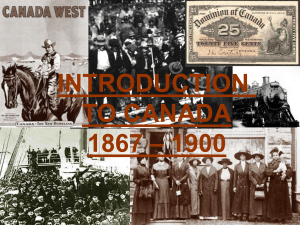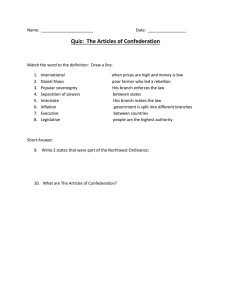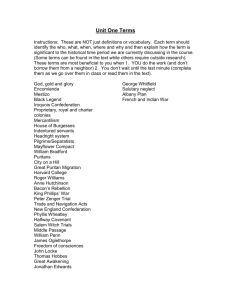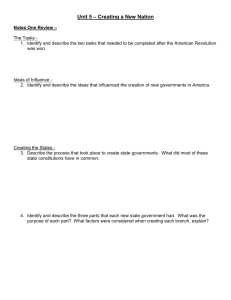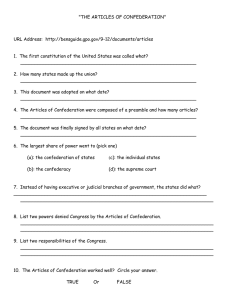INTRODUCTION TO CANADA – 1900 1867
advertisement
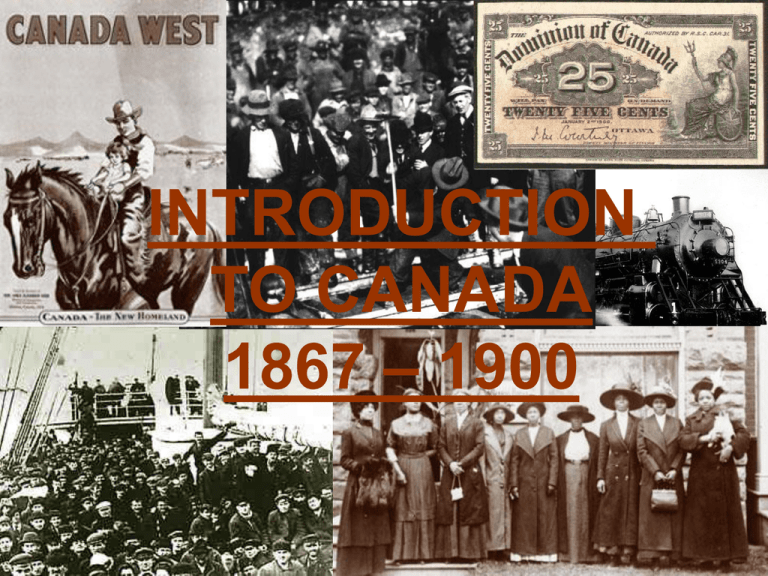
INTRODUCTION TO CANADA 1867 – 1900 CANADIAN TERRITORIAL EXPANSION 1867 – Confederation: Ontario, Quebec, New Brunswick, Nova Scotia 1870 – Canada purchases Rupert’s Land (NWT) Manitoba enters Confederation 1871 – British Columbia enters Confederation 1873 – Prince Edward Island enters Confederation 1905 – Alberta &Saskatchewan join Confederation BUILDING A RAILWAY ACROSS CANADA In order to help convince British Columbia to join Ottawa promised to build a transcontinental highway. The project began in 1872. The railway was a cornerstone of John A. McDonald’s desire to create a Canadian Nation. Chinese immigrants were brought in to help complete the job. The last spike was entered on November 7, 1885. CANADA’S POPULATION 1867 – 3.3 million 1911 – 7.2 million In order to populate Western Canada, the government made it attractive to immigrants by offering cheap land. In 1896, PM Wilfred Laurier created an “Open Door” policy for immigrants from certain countries and offered them land. GOLDEN AGE OF PROSPERITY MARITIMES coal and steel industry ONTARIO/QUEBEC factories boom, jobs are plentiful, cities explode, Toronto, Montreal population doubles WESTERN CANADA wheat exports quadruple, farms modernize and settlement increases NORTHERN CANADA Klondike Gold Rush (40 000 move to the Yukon) SOCIAL MOVEMENTS Women begin to take jobs outside the home and take a greater role in society. However they are paid poorly and are not treated equally to men. Women start to organize in order to gain the right to vote and equality. Migration to the cities led to poverty, disease and harsh working conditions. The government refused to help so private charity groups (usually run by women) were created to help the less fortunate. They pushed for better wages, better education and health care. FRENCH – ENGLISH RELATIONS Confederation allowed Quebec to be the homeland of French Culture and the Catholic Church. It was assumed that Quebec would cease to be French due to the English that surrounded them and who dominated North America. Immigrants to the West were Protestant and English or from Eastern Europe. French people outside of Quebec were not protected and lost their right to have Catholic schools or do their daily business in French. (Manitoba Schools Question) Louis Riel (Leader of the Metis) led a rebellion to regain the rights of French speakers in Manitoba. He lost and was hanged. Quebec sees Riel as a hero while the rest of Canada sees him as a traitor.
